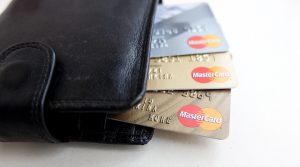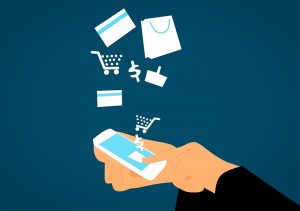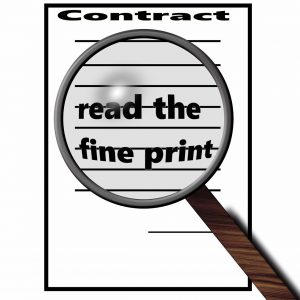Americans have been in love with shopping online for a long time. Then 2020 hit, and things really went nuts. Online retail sales increased 32.4% year over year in 2020 and were up 39% in the first quarter of 2021 – so yeah, it looks like we’re all out there, spending in cyberspace. And there are so many advantages to online shopping, from convenience to the ability to easily compare prices to seemingly unlimited choices – but what about the ability to pay over time? And no, we’re not talking about putting things on your credit card and paying the bill (and the interest included in that bill) off slowly, we’re talking about using buy now, pay later (BNPL) services, like Klarna, Afterpay, Affirm and Quadpay. So how do these services work, are they for real, and should you give them a try?
How Does It Work?
Around 23,000 retail stores now partner with BNPL services (or point-of-sale loan providers), meaning you’ve probably seen the logo of a company like Klarna, Afterpay, Affirm, or Quadpay next to the “checkout” button on a site you’ve been shopping on, tempting you to make a big purchase. In fact, a July 2020 study found that BNPL service offers increased 197% from the first quarter of 2019 to the second quarter of 2020.

They’re definitely popular, but are you thinking that these services seem too good to be true, with those small, doable, fee-free easy installments? After all, you don’t have to pay interest or fees like with credit cards, and you get more convenience than with an old-school store layaway plan (remember those?), with which you would have to fully pay the item off before you were allowed to take it home. But while these services certainly don’t offer consequence-free loans, they are legitimate companies. So how do they work?
Anyone 18 or older with a credit card, debit card, or bank account can use a BNPL service; if you choose to pay this way, you can either create an account for speedier checkout, or simply choose the option when you’re making your purchase and check out that way. Once you check out, the BNPL provider will pay the full price to the vendor, but you’ll pay (usually) 4 payments made in 2-week installments over a period of around 6 weeks (although there are often multiple choices for payment plans), with your first payment due at the time of purchase. As long as you make your payments on time, in many cases you won’t be charged any interest or fees.
Wondering how these services make money? Well, unlike credit card companies, which make the bulk of their money from interest and fees charged to customers, BNPL services make their money by charging their retail partners a fee, although they do make a small amount from late fees and interest payments. Why do retailers choose to pay a fee to one of these services? Offering the option to pay over time often means that customers using them tend to spend more, and make bigger purchases.
There are a few things to be wary of here. First of all, the profit model of these services could drive up retailers’ prices, since it’s the retailers who have to pay the fees. Second, look again at why retailers use these services: they encourage you to buy and spend more. After all, it’s tempting to use a service that doesn’t charge any interest or fees, but you could very well be using this payment flexibility to finance items you don’t really need – and should probably only be buying if you can pay for them outright. Which brings us to the question: should you give one of these services a try?
Proceed with Caution
Here’s the thing: BNPL services are loans (remember: point-of-sale loans?), and no loans come without consequences, except maybe those from your family – wait, scratch that. Nope, there are no consequence-free loans. Yes, BNPL is easy, and can seem very budget-friendly, but there are probably more reasons to steer clear of using this type of service than there are to take advantage of one.
The only pros to BNPL are:
- You get what you want when you want it
- As long as you’re super on top of things (and choose the right service), you probably won’t end up paying anything extra, like you might if you put something on your credit card and didn’t pay off the balance every month
- Your payments are predictable, so might be easier to budget for
- You can often get approved for a BNPL loan even if you have a low credit score
As for things you should be wary of? There are plenty. For example:
- Risk of fees – While many BNPL services don’t charge interest or fees (but some do, so be careful!), most charge fees for late payments. For example, Afterpay charges $8 or 25% of the transaction, whichever is less. You might think that won’t happen to you, but research shows that around half of all BNPL service users end up making late payment, mostly because it becomes easy to be disorganized when you’re juggling multiple bills (like credit cards, BNPL, utilities, etc) that are all due at different times.
- A net negative to your credit score – Taking out a BNPL loan typically won’t help you build your credit, and it could actually end up hurting it. BNPL providers generally don’t report on-time payments like credit cards, although late payments could damage your credit score. Not only that, but by opening one of these loans, you decrease the average age of your credit history which also decreases your credit score.
- Increased urge to splurge – BNPL loans make it even more tempting to impulse buy, and give you an easy way to get around your credit card limits, or can trick you into feeling like you’re not adding to your credit card debt.
- Psychological warfare – Speaking of psychological tricks, seeing those little amounts that your big purchase will be split into can make that big purchase seem, well, not so big – and might persuade you to buy something you don’t really need and can’t really afford.
- Effects on your financial future – Think of it this way: any time you add to your debt, it’s almost like you’re taking something away from yourself in the future. All those little bite-size payments will add up, and you’ll be obligated to set aside money for them – money you could be using to get ahead of your debt or for an emergency fund.

- The fine print – There are also a few little practical things to be aware of, as well, when deciding whether to use a BNPL service. First, having so many payments can be difficult to track. Next, if you want to return an item, or if you’ve paid for, say, a trip this way, things can get complicated. You’ll eventually get your money back, but you will probably have to continue making payments in the meantime; if you don’t, you could end up incurring fees or dinging your credit score. Finally, if you’re looking to pay for things over time, you might be better served by going with a credit card: you can choose a card that has rewards, which BNPL services do not offer. Just remember, make sure you can afford whatever it is you’re paying for with any kind of credit or loan!
We’re not saying that you should never make any “fun” purchases – in fact, most financial experts suggest that you put a hefty chunk of your monthly budget toward fun stuff. But the key there is that those purchases are built into your budget, meaning they come from the money you already have, and they won’t put you under financial strain later on. The consensus of most experts seems to be that if you don’t have the money in your account to cover it, you should really hold off, no matter how tempting the offer is – because remember, debt is debt, even when the offer is as tempting as BNPL can be.